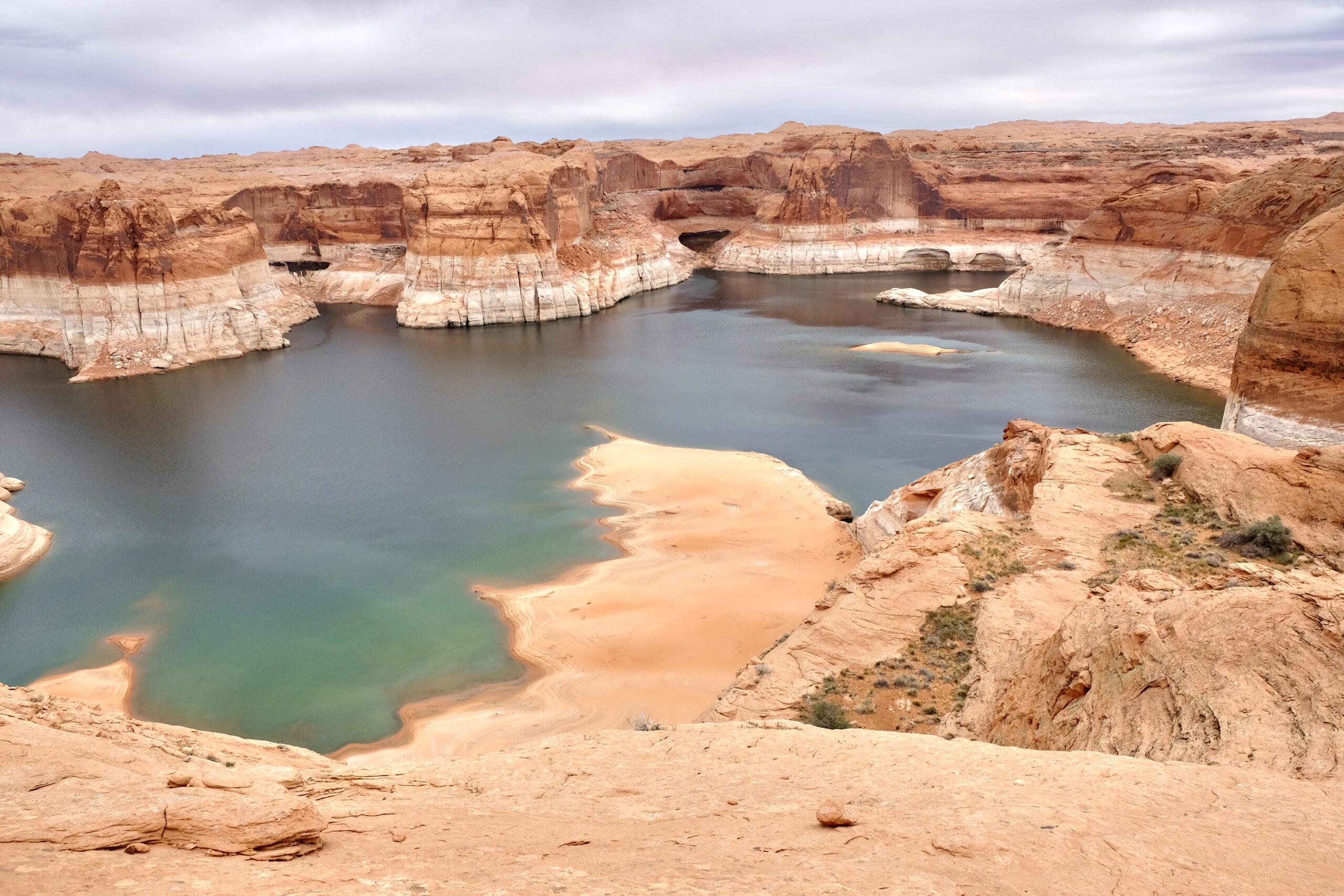Or, in which we took our boats for a long walk across the desert
Or, the fine art of bailing
Or, how to avoid getting rescued
The Cathedral in the Desert is a natural amphitheater eroded into the soft Navajo sandstone by eons of erosion, located on one of the small creeks the flow into the Escalante River just upstream of the Glen Canyon Dam on the Colorado River. Between 1954 when it was identified and named by geologists and 1963 when the dam was built, the Cathedral in the Desert was considered one of the most beautiful natural sites in the southwest. Once water began to back up behind the dam, the Cathedral was buried under 100 feet of water below the surface of Lake Powell.
The crippling drought currently affecting the Colorado River has dropped the water in Lake Powell to levels not seen since the early 1960’s when the dam was first built, exposing the Cathedral in the Desert for the first time in decades. And we wanted to see it.
Getting there is not easy. It’s up a steep-walled side canyon that branches off from Lake Powell. After considering various options including rappelling in from the top of the canyon, we decided that our best option was to go on foot to one of the few places you can hike down from the plateau to lake level, and then packraft into the side canyon until we had to walk (carefully avoiding the quicksand left behind in the wet canyon bottom).
We needed a 3-day window of clear weather, so we scrutinized the forecast for the time we’d be in the area, consulted rangers and picked up backcountry permits at the visitor center, and set off with a plan on the day the weather window looked most promising.
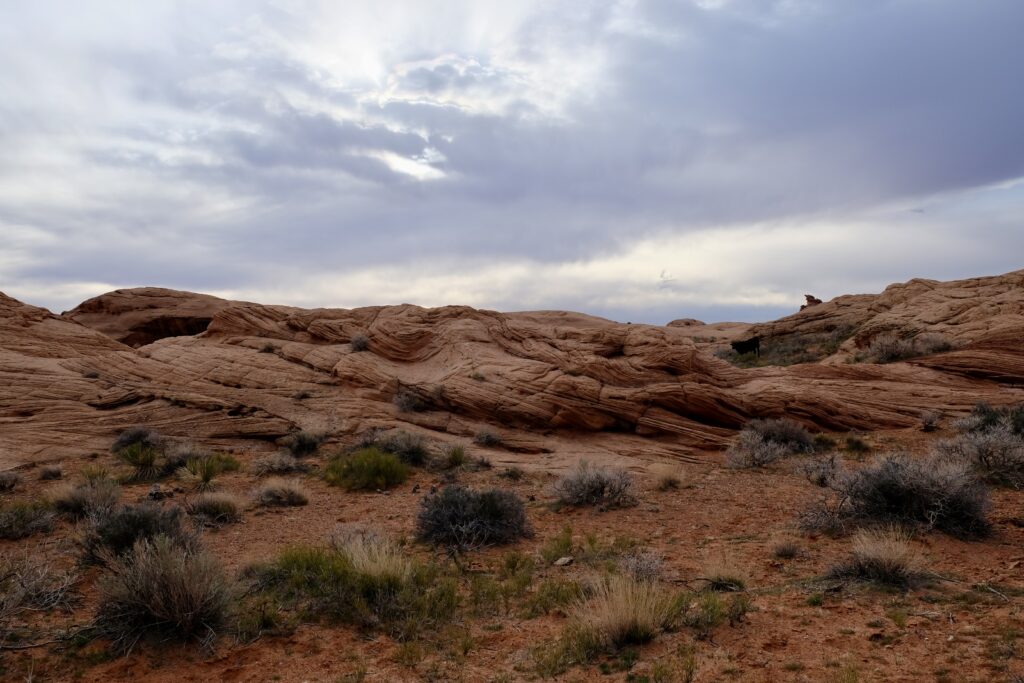
We camped the first night near the dirt road so that we could get an early start the next morning, because we had a long hike across the plateau to reach the spot at the lake edge where we could access the water. The sky wasn’t clear, but this was the best shot we had this trip, so we set off, carrying our pack rafts across the desert.
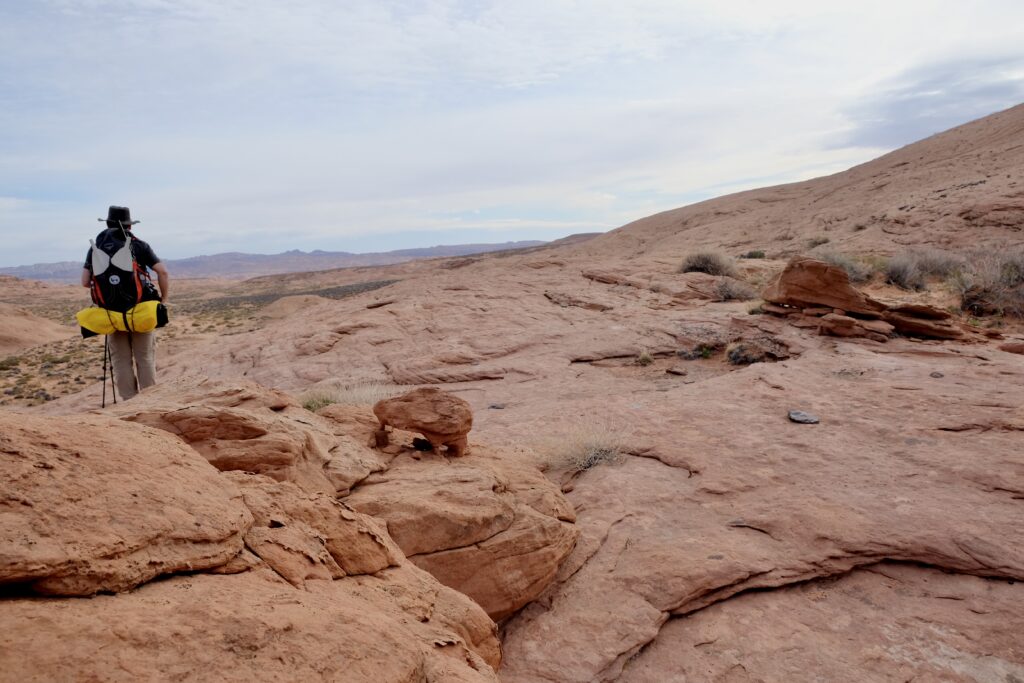
There isn’t a trail to follow– we had to navigate overland and across sand, slick rock, and through shrubby brush to reach the edge of the lake. It’s really quite shocking how far the water has dropped and how high up the cliffs the bleached “bathtub ring” extends.
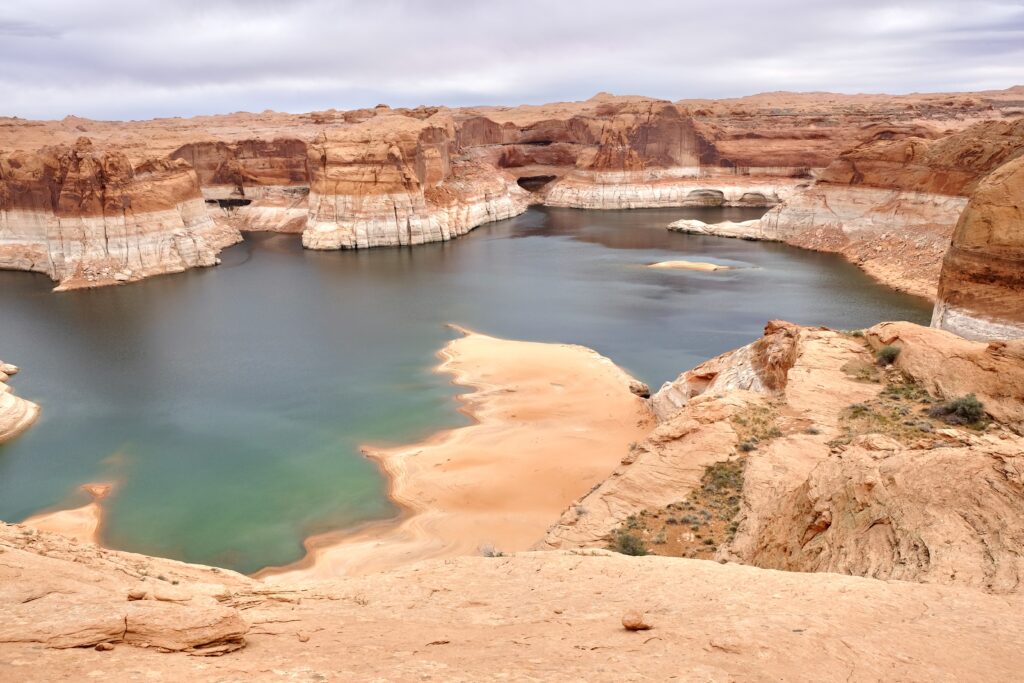
Looking down into side canyons, we could see the skeletons of trees once fed by desert springs, then drowned by the lake, and now half-buried in the mud.
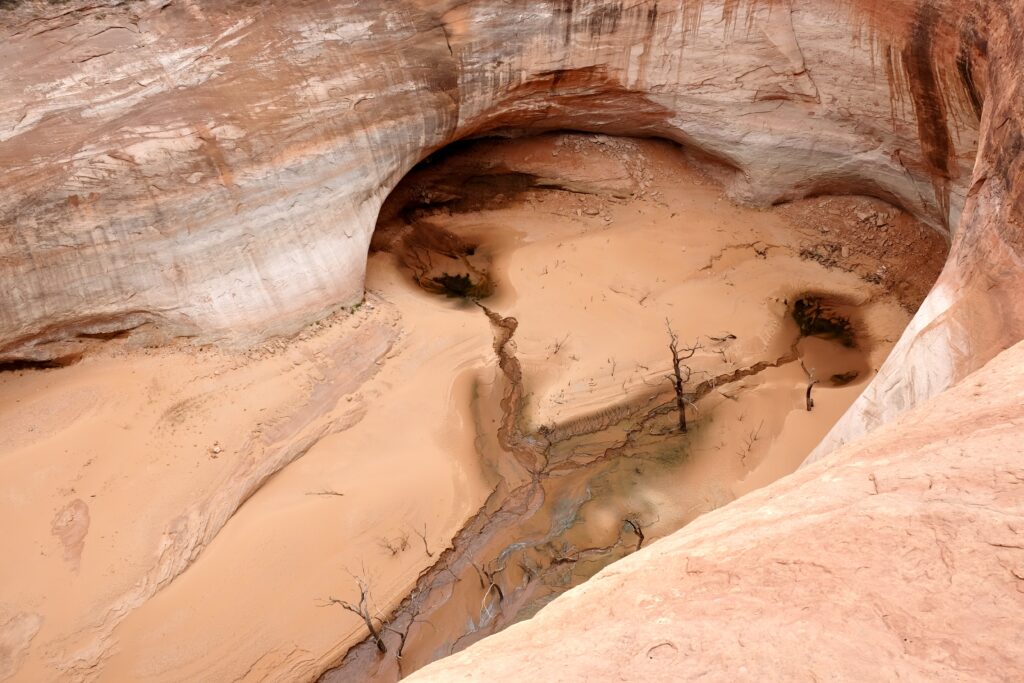
We found the access point we were looking for, and scouted the path down to the lake level to put in our rafts, but all along we’d been keeping an eye on the sky and the weather. The wind had started to pick up, and when we checked the updated weather forecast via inReach, the chance of rain had increased dramatically. Wind would make it harder to paddle and steer our inflatable pack rafts, and rain is a terrifying prospect in a narrow, steep-walled canyon whose very existence raises the specter of flash floods.
Our options at that point were to go on (which seemed like a very bad idea). We could camp where we were on the plateau to give the weather a chance to settle before setting off on the water the next morning, but even if we stayed out of the canyon, any significant rain on the dirt access road would render it impassible and we’d run the risk of being stranded for several days until it dried out. Or we could turn back.
It was time to bail. We started our hike back out to the road, picking up the pace even on tired legs as sky continued to darken. We made it back to the truck just before the rain started, and then it became a race back to pavement before the dirt road soaked up enough water to turn into a tire-grabbing quagmire. We did make it back to pavement without getting stuck, and so ended our (first) attempt to see the Cathedral in the Desert.

